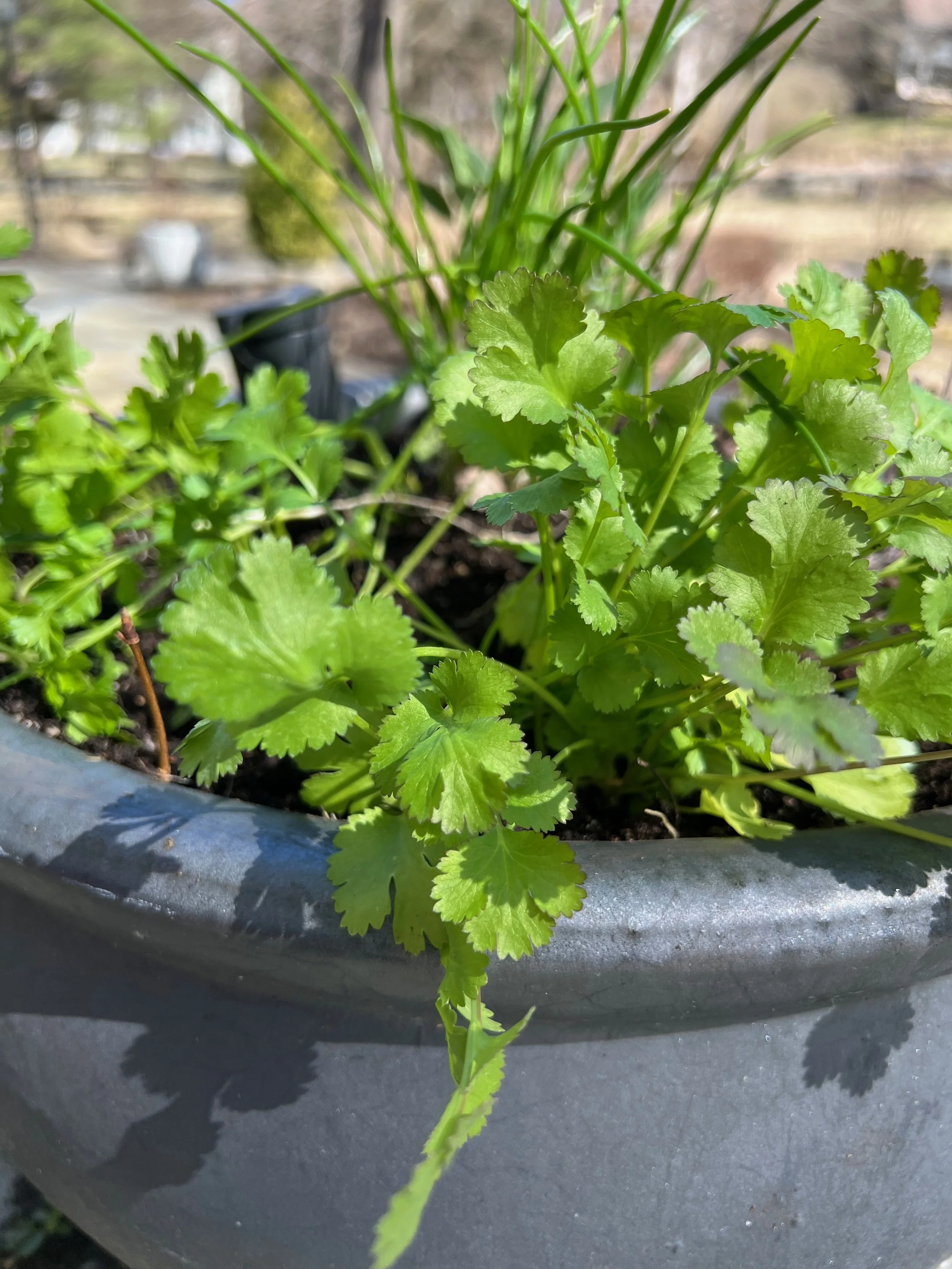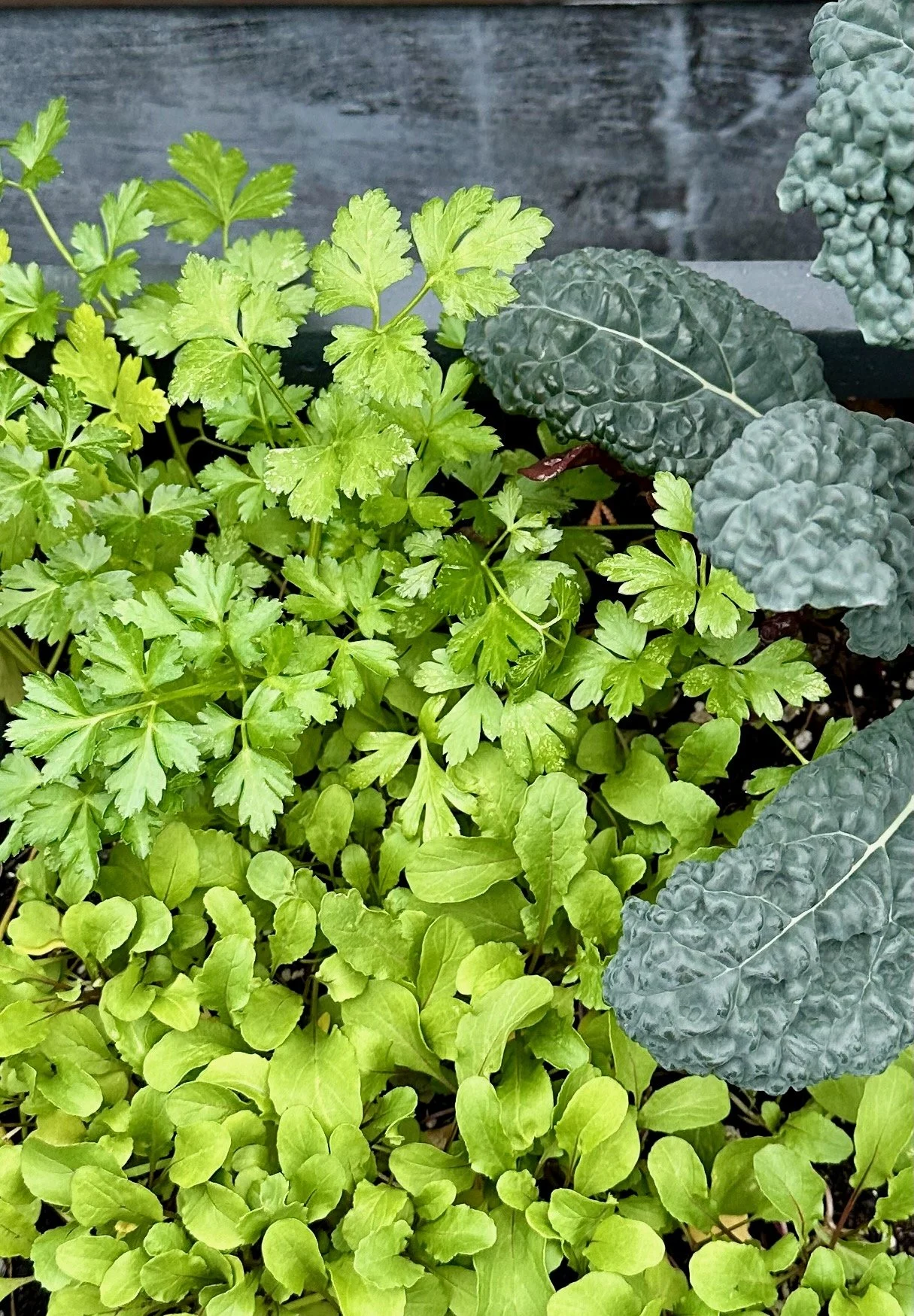Overwintering Vegetables
For Early Spring Harvests
Let’s start with a quick recap. Lettuces, spinach, broccoli, peas, and cilantro all thrive in cool weather, which is why we grow them in spring and again in fall here in the Hudson Valley. (You can find my seasonal planting list here.) We usually harvest through autumn and into the holidays, but a few crops are planted for an early spring payoff in a process called overwintering. Not only will this give you a seemingly impossible early harvest, exposure to frost makes these vegetables their most flavorful version, sweeter, denser, and more complex than in milder months.
For the sake of this post, I’m only going to recommend kitchen garden plantings that don’t require added protection like cold frames or low tunnels. The most that some of these will need is a good mulching.
THE WINTER LINE UP
Hardy Greens
Spinach – Try Bloomsdale from Row 7 Seeds. It has thick leaves, excellent cold tolerance, and a flavor that improves with frost.
Kale – Winterbor, Red Russian, and sometimes Lacinato types hold well, and you can keep picking outer leaves even in snow.
Parsley – Often stays green under light snow and regrows as soon as the soil thaws.
Roots
Carrots – Leave them in the ground under mulch; their sweetness deepens with cold. Remove mulch in the spring.
Allium Family
Upon planting, cover with straw, which can be left through harvest for bonus weed suppression.
Garlic – Plant in October for midsummer harvest.
Shallots and onions – Fall-planted sets overwinter easily and bulb early.
Experimental or Borderline
Cilantro and dill – If left to self-seed, they often reappear with the first warm spell.
Swiss chard – Survival varies in Rhinebeck; plants in wind-sheltered beds have the best chance during mild winters. It has happened so I chance it each year.
Timing and soil preparation
Sow hardy greens from late August to early- October so they reach half-maturity before hard freezes. That being said, I encourage you to experiment. It’s late October and I’m going to seed another round of spinach, despite the frosty nights.
Direct-seed roots such as carrots and beets around Labor Day for winter storage in-ground.
Choose well-drained beds; saturated soil leads to rot.
Top with a light compost layer before mulching to feed soil life through winter.
ADD A LITTLE SPRING IN YOUR STEP
By March, I’m quite over the grey of winter and ready for spring. So watching the overwintered spinach leaf out is pure joy. These early harvests give you something fresh before the soil even warms, and, bonus, keep roots in the ground longer to nourish the microbial life below.
If you only overwinter one veg, let it be Winter Bloomsdale spinach, a forgiving and rewarding choice.
Return to the Gardenwell Journal









